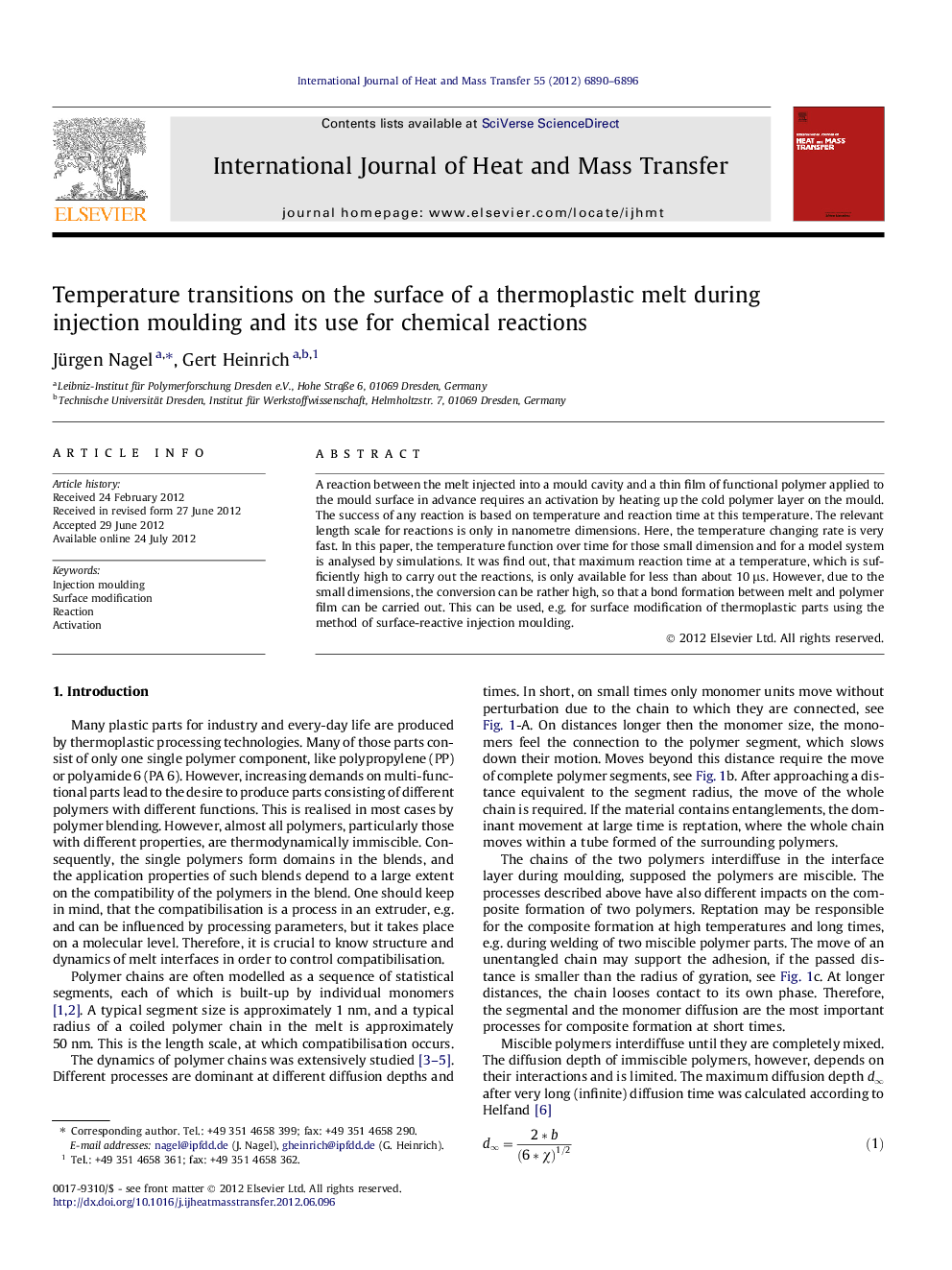| Article ID | Journal | Published Year | Pages | File Type |
|---|---|---|---|---|
| 658718 | International Journal of Heat and Mass Transfer | 2012 | 7 Pages |
A reaction between the melt injected into a mould cavity and a thin film of functional polymer applied to the mould surface in advance requires an activation by heating up the cold polymer layer on the mould. The success of any reaction is based on temperature and reaction time at this temperature. The relevant length scale for reactions is only in nanometre dimensions. Here, the temperature changing rate is very fast. In this paper, the temperature function over time for those small dimension and for a model system is analysed by simulations. It was find out, that maximum reaction time at a temperature, which is sufficiently high to carry out the reactions, is only available for less than about 10 μs. However, due to the small dimensions, the conversion can be rather high, so that a bond formation between melt and polymer film can be carried out. This can be used, e.g. for surface modification of thermoplastic parts using the method of surface-reactive injection moulding.
